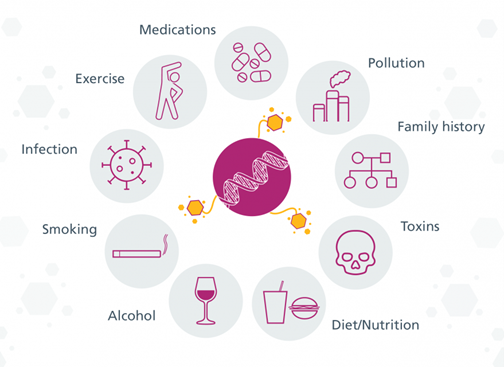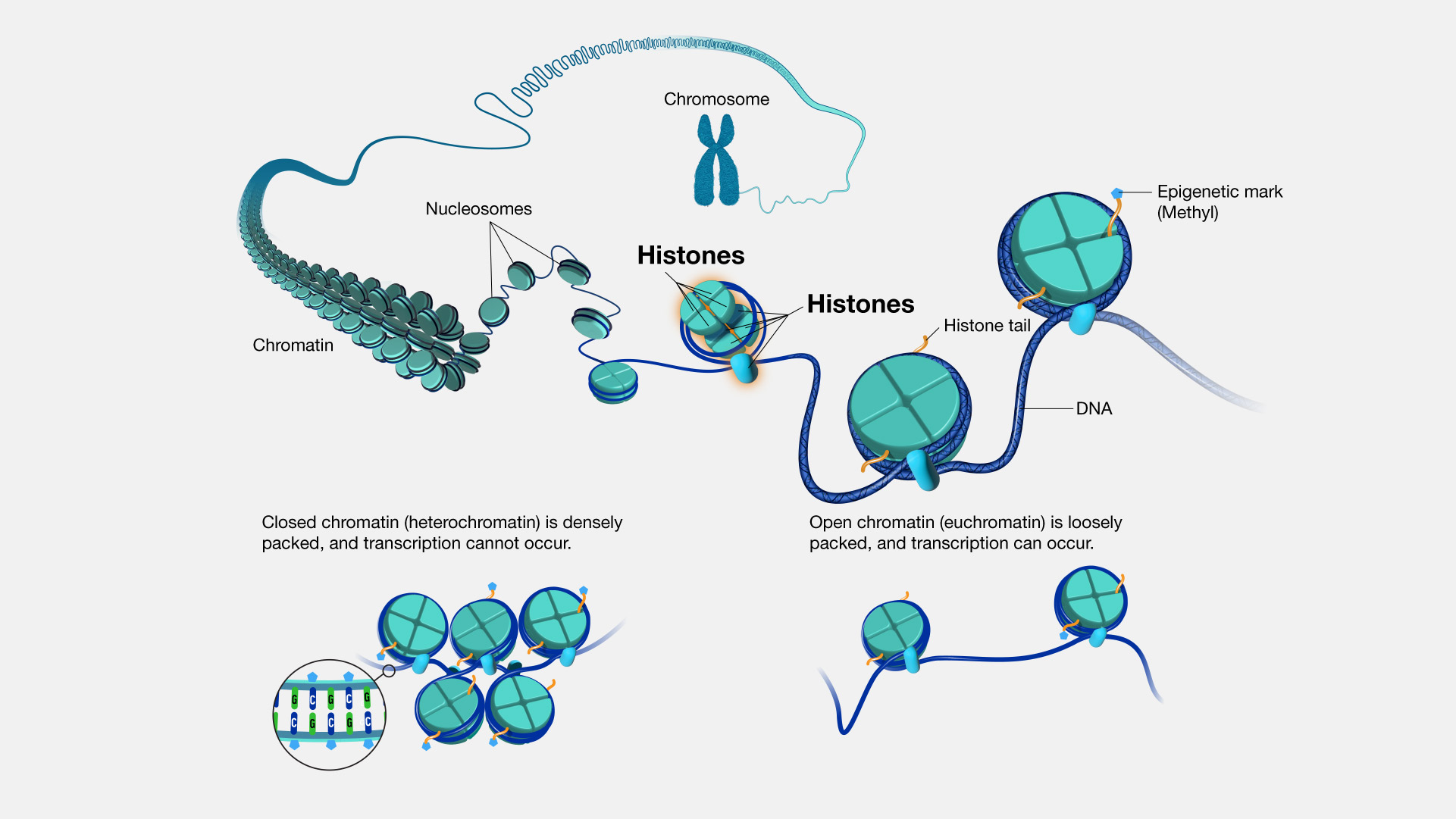Epigenetics
Epigenetics (sometimes called epigenomics) refers to chemical modifications to DNA structure that do not alter the DNA sequence, but can affect gene expression and an individual’s phenotype. The collection of all epigenetic changes in a genome is called an epigenome.
Introduction
Put simply, epigenetics is a way of influencing how our genome is regulated without the DNA code itself being changed. Epigenetics can determine when genes are turned on and off (also referred to as gene expression), and which proteins are produced as a result. Some epigenetic modifications can be inherited, while others are acquired throughout life.
Factors that influence the epigenome
Most epigenetic modifications are transient and reversible, allowing our cells to respond and adapt to changes in environment and behaviour. Although they happen on a molecular level, they can have a considerable impact on us. They can also be influenced by external factors, such as diet and lifestyle.
Take a look at Figure 1 to explore some of the many factors that can influence the epigenome.

Figure 1: What internal and external factors can influence the epigenome?
Types of epigenetic modifications
There are many different forms of epigenetic modification (collectively known as the epigenome) that take place in an organism’s genome – see Figure 2.
The most common epigenetic modification is DNA methylation, which is associated with switching genes off. Here, a chemical called a methyl group attaches to a region near the start of a gene and prevents it from being switched on. For example, methylation of one of the two X chromosomes in every cell of a female is inactivated during embryonic development. X-chromosome inactivation stops female cells from having twice as many X chromosome gene products as male cells.
Another modification known as chromatin remodelling can alter how tightly the DNA is packaged in the chromosomes, relaxing the tightly packed chromosomes to allow the transcription factors which control gene expression access to the genes within.

Figure 2: Epigenetic modifications affecting transcription and gene expression. Image reproduced courtesy of the National Human Genome Research Institute.
Use in clinical context
DNA methylation changes have been implicated in many diseases and even have a role to play in cancer, where they can be used as a molecular marker for diagnosis and treatment.
Click through these diagrams to see how epigenetic patterns can change between healthy cells and cancer cells.
Although uncommon, some epigenetic markers can be passed on from parent to offspring through a process called imprinting. Imprinting can lead to the silencing of either the maternal or paternal copy of a gene, which can lead to complications if the other copy of the gene is either missing or not functioning correctly. Examples of conditions caused by imprinting are Prader-Willi syndrome and Silver-Russell syndrome.
Key messages
- Epigenetics controls how the genome is regulated without changing the DNA code. It can turn specific genes on or off, and even control the structure of the genome.
- There are many types of epigenetic modification and most of them are transient and reversible, allowing us to adapt to our environment.
- The epigenome can also have a considerable impact on our health. It is linked to cancer and rare conditions such as Silver-Russell syndrome.
Resources
For clinicians
- NHS England Genomics Education Programme: What is epigenetics?
- TED-Ed: What is epigenetics? (Carlos Guerrero-Bosagna) (video, five minutes two seconds)
For patients
- TED-Ed: What is epigenetics? (Carlos Guerrero-Bosagna) (video, five minutes two seconds)